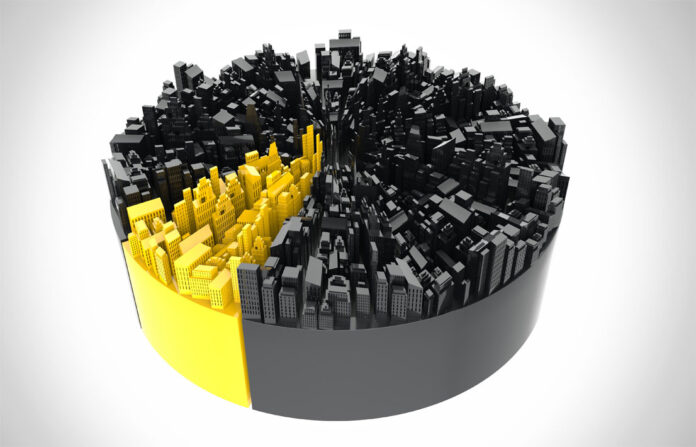
By Charlene Crowell, Senior Fellow with the Center for Responsible Lending
The August 23 police shooting of an unarmed Black man in Kenosha, WI, triggered yet another round of community protests and national news coverage of a Black man. A series of multiple gunshots fired by a local police officer, were not fatal for 29-year old Jacob Blake; but may have permanently paralyzed him from the waist down.
Days later on August 28, the National Action Network served as a major organizer for a Commitment March, rededicating the yet unaddressed dreams of the historic 1963 March on Washington. Assembled again at Washington’s Lincoln Memorial, the day’s speakers spanned nationally-known leaders like Rev. Al Sharpton, Martin Luther King III, and Attorney Ben Crump to the family members of George Floyd, Breonna Taylor, Jacob Blake and others.
The irony is that despite the passage of nearly 60 years between the original march and its 2020 recommitment, many of the issues that have plagued Black America remain the same. Black America and other people of color still cry for justice, equality, and freedom. Yet noticeably, what formerly focused national attention on events in Selma, Montgomery, and Birmingham have now emanated from Ferguson, to Kenosha, Minneapolis, Portland and other locales.
Why measurable forward strides in policing, or economic progress have remained elusive after decades of calls for reforms may partly be explained by the findings of a new policy analysis by the U.S. Federal Reserve Bank in St. Louis. Using U.S. Census Bureau data, Ana Hernandez Kent, a policy analyst with the St. Louis Fed, found that America’s racial poverty gap continues to suppress social and economic justice. Moreover, Wisconsin, not a southern state, claims the dubious distinction of having the largest poverty gap in the nation.
Nationally the St. Louis Fed found that in 2018, Black households earned 61 cents for every $1 of White household median income. Further, the Black/White median household income gaps ranged from 87 cents per dollar in Maine and Hawaii, down to 32 cents per dollar in the District of Columbia. The disparity in median translates into 22% of all Black Americans living in poverty, a gap of 13% compared to Whites who are poor. Wisconsin’s gap is 23%.
“In noting the socioeconomic indicators of median income, poverty rates and health insurance rates, I found that White people had more favorable outcomes than Black people in every state,” wrote Hernandez Kent.
Poverty’s racial disparity extends to other key measures such as median incomes, homeownership and retirement.
Even with the enactment of the Fair Housing Act more than 50 years ago, today’s Black homeownership rate is dwindling. According to Ohio State University professor, Trevon Logan, “The homeownership gap between Blacks and whites is higher today in percentage terms than it was in 1900.”
Prof. Logan’s position is bolstered by findings from a 2020 report by the National Association of Realtors, A Snapshot of Race and Homebuying in America that found:
- 62% of Black mortgage applicants were rejected because of their debt to income ratio, compared to only 5% of whites; and
- 51% of Blacks are first-time homeowners, compared to only 30% of Whites.
Moreover, since the Great Recession that heavily hit Black homeowners a decade ago, today’s Black homeownership rate has yet to return to pre-recession levels.
With lower and life-long disparities in median income earnings, the ability to prepare for retirement is hindered as well. Social Security figures each worker’s retirement benefit on the basis of a taxpayer’s 35 highest-earning years. With lower incomes and a corresponding lack of monies available for savings or retirement, Black Americans rely on Social Security more than other races and/or ethnicities. Now, for much of Black America, Social Security is a financial lifeline and often the major retirement benefit.
In sum, it seems that in 2020, historic ills remain virtually unchanged. A key component of what continues is police violence against Black America.
In 1963, escalating racial tensions that worsened with growing numbers of peaceful protests that became violent by counter-protesters and led to multiple arrests, prompted President John F. Kennedy to deliver a nationally televised address on America’s racial reckoning.
“One hundred years of delay have passed since President Lincoln freed the slaves, yet their heirs, their grandsons, are not fully free”, he continued. “They are not free from the bonds of injustice. They are not yet freed from social and economic oppression. And this Nation, for all its hopes and all its boasts, will not be fully free until all its citizens are free.”
Fast forward and it is nearly inconceivable that the current president would deliver such an address. In fact, President Trump and HUD Secretary Ben Carson co-authored a recent op ed in the Wall Street Journal that portrayed mixed income neighborhoods as “social engineering.” The redlining of Black communities, racial covenants, real estate steering and restrictive zoning laws that together perpetuated segregated housing were never acknowledged in the guest column.


